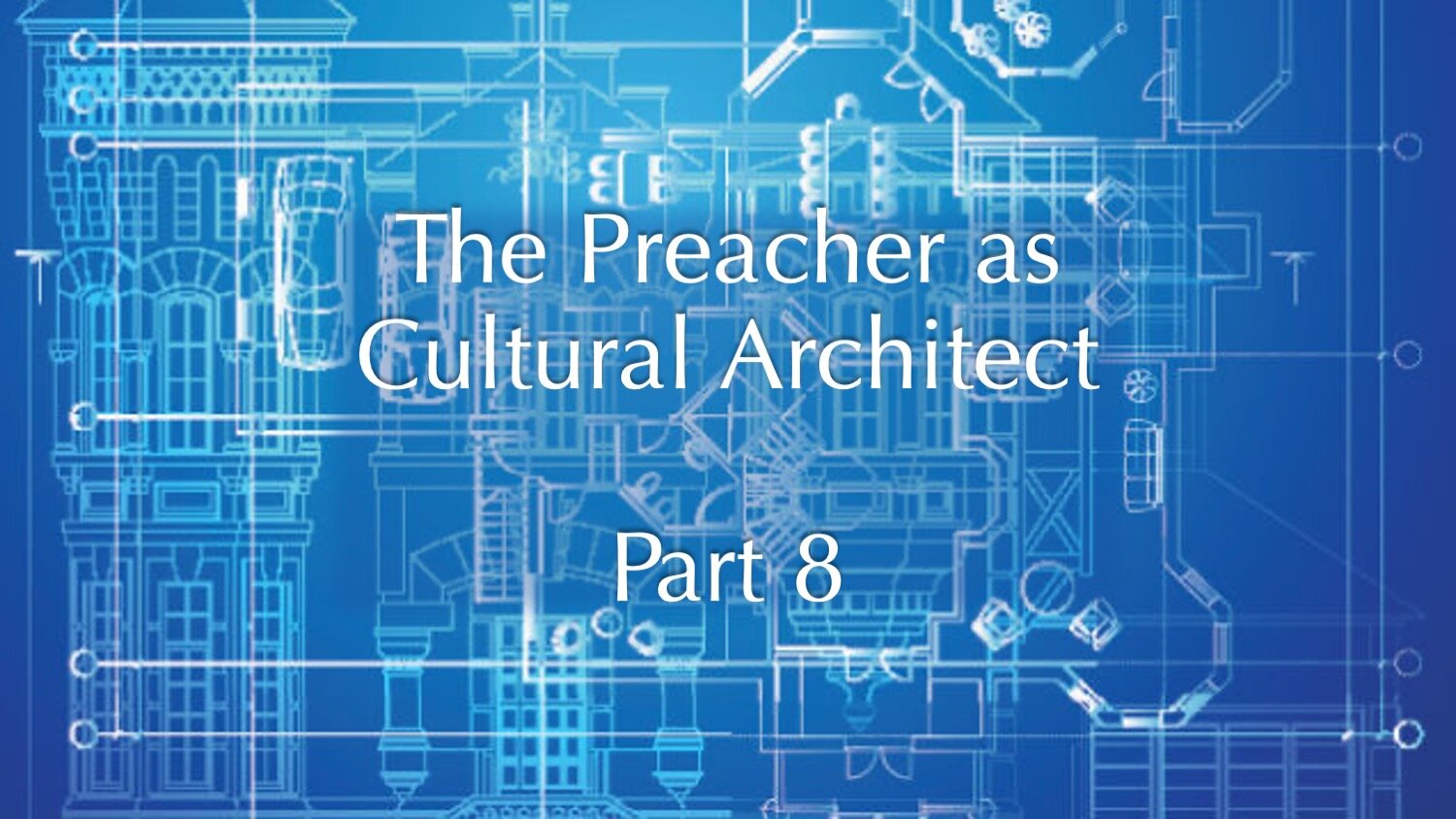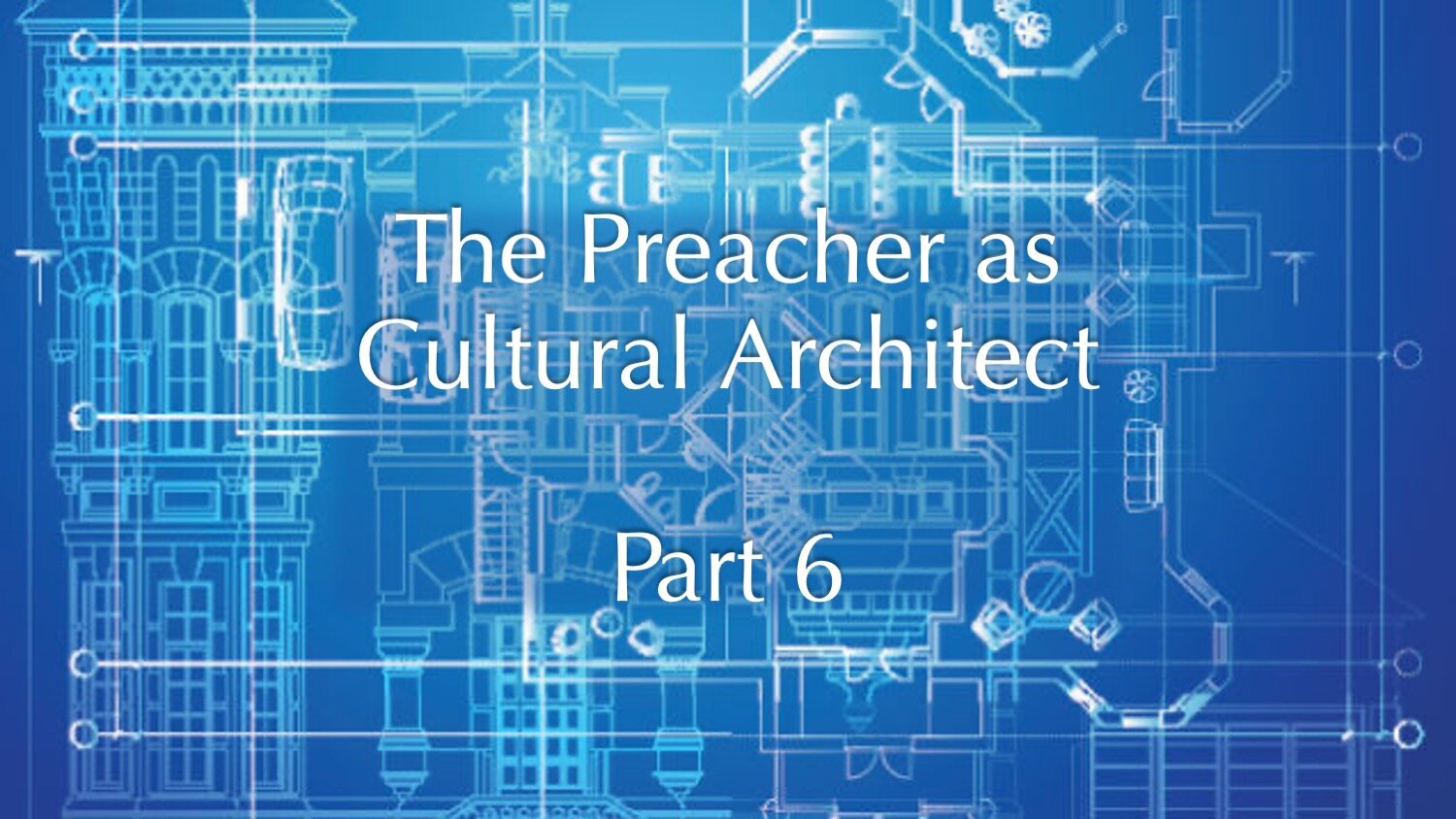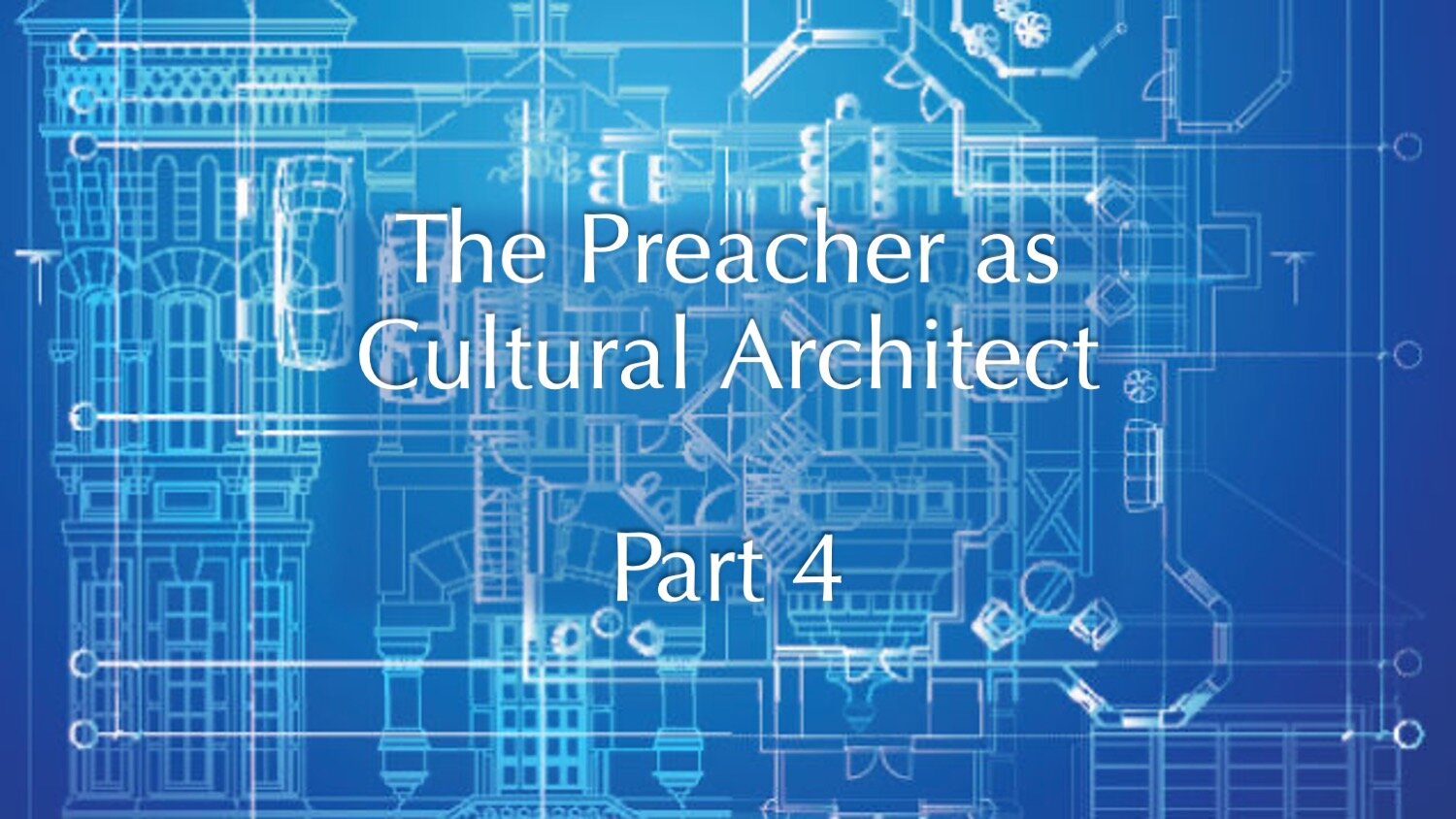I have attempted to explore an alternative to “warfare” as the paradigm for cultural engagement in preaching. My premise is that the church can have its most powerful impact on culture not by fighting it, ignoring it, or even merely conversing with it, but by presenting it with an alternative—a culture that embodies God’s truth in consistent practice. I contend that a key player in this process must be the preacher who intentionally and carefully constructs a culture that reflects truth both in its patterns of meaning and its strategies for action.
While “praxis” may come last in our thought process and discussion of cultural architecture, it comes first in the perception of those who will observe and experience our culture. We have explored the significance of our story, our world view answers and our symbols, to ensure that our praxis stands on firm, coherent and consistent footing. We do this because the world that watches us reads the entire process in reverse, from practice to meaning.
Symbols embody the meaning of story and world view in a tangible way, making them visible in the life of a community. There is no culture without symbols, and preachers who would take on the task of cultural architecture must also explore and define the symbolic world of the culture in which they live, and the culture they wish to create.
As we preachers talk about and practice our craft, we sometimes treat “story” and “precept” as mutually exclusive categories. As in, “are you a precept preacher or are you a storyteller?” But this is a false dichotomy. Jesus taught in parables, but he also made clear and concise declarations such as, “I am the way, the truth, and the life.” If we are to take seriously the task of cultural architecture, we need both story and precept.
The story must be told, and it must lead to precept.
At the foundation of any culture is a shared narrative. The story of God and his people that we have received in the Scriptures is, without question, the narrative upon which the culture of the church must stand. This story encompasses all human existence, from our pre-history to our final destiny. It offers a comprehensive and absolute way of understanding ourselves, the world, and ourselves in the world.
Even as Jesus observed the traditions and habits of his received culture, he subverted it. In subtle ways, he planted an adjusted worldview in the minds and hearts of his followers, and undermined many of the cherished assumptions, as well as the political powers, of his society. This subversion, though subtle, was significant and apparent enough that it led to his death. It was also effective enough that the result was a distinct culture, a new community, that over the course of a few hundred years, in the face of persecution and poverty, proceeded to permeate and transform the collection of cultures known as the Roman Empire.
The conversation on Christianity and culture has been enriched and stimulated in recent years by the insights of Andy Crouch. In his book, Culture Making: Recovering our Creative Calling, Crouch has offered his own taxonomy of Christian responses to culture. He identifies four strategies for cultural change, based primarily on the record of American Evangelicals in the past century.
In the interests of full disclosure, I should acknowledge that my missionary vocation and experience profoundly influence how I think about preaching and culture. I spent my teen years as a missionary kid in Central America. I have spent most of my adult life as a cross-cultural missionary as well. By default, I tend to think like a missionary.
“Thinking like a missionary” will kill any tendency to see culture as a monolithic beast to slay.
You would be hard pressed to find a major discussion about Christianity and culture in the second half of the Twentieth Century that does not reference the work of ethicist H. Richard Niebuhr. His book Christ and Culture, published in 1951, defined the conversation for a generation. The book had wide and lasting influence for at least two reasons. First, it addressed a topic that many Christian thinkers considered to be of utmost importance. Second, it provided clear and satisfying handles for talking about ways Christians might respond to culture.
A handful of choices define every preacher. From where will the message come? Will it offer answers gleaned from the social sciences, public opinion polls, celebrity talk show hosts, or political dogma? Or will it flow from the acts and words of God discovered and experienced in the Scriptures? What will the preacher’s sermons do? Will they instruct, leading to better informed hearers? Should they offer perspective, encouragement and comfort, leading to better adjusted hearers? Will they admonish and exhort, leading to better behaved hearers? Or will they seek transformation, leading to simply better, reborn, hearers?
These and other key issues fill the pages of every good Homiletics textbook. One question, however, which can, in subtle but powerful ways, define and drive a preaching ministry, is often overlooked: What is the preacher’s, and the sermon’s, relationship to culture? The answer to this question will make all the difference in the direction a preacher’s ministry will take.
How do we go about intentionally establishing a ministry of “big story preaching?” We need a “big story homiletic” that could secure a metanarrative thread in every sermon. Such a homiletic will need to weave the big story into its theology, its hermeneutic, its cultural engagement, and its application of the text.













Preaching matters because preaching creates culture. Just being aware of this fact should move us towards meaningful and regular reflection on the question, “what kind of culture is my preaching creating?”